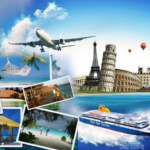1. Introduction: Tracing the Evolution of Communication from Pirates to the Present
The history of maritime communication is a fascinating journey that mirrors human ingenuity in overcoming distance, danger, and environmental challenges. From the early days of pirates and navy ships relying on visual cues to today’s instant digital chats, each stage reflects technological advances intertwined with strategic needs. Understanding this progression provides insights not only into historical tactics but also into the ways modern gaming can simulate and educate about these methods.
Contents:
- The Role of Communication in Pirate Era Naval Warfare
- Transition from Traditional to Modern Maritime Communication
- The Digital Revolution: From Ships to Screens
- Communication in Modern Gaming: Bridging Reality and Virtuality
- Case Study: «Pirate Bonanza 2» as a Modern Illustration of Evolution
- Non-Obvious Aspects of Communication Evolution
- Conclusion: The Continuous Journey of Communication Innovation
2. The Role of Communication in Pirate Era Naval Warfare
a. Methods pirates used to coordinate attacks and intimidate targets
During the Golden Age of Piracy (late 17th to early 18th century), pirates relied heavily on visual signals and auditory cues to communicate across ships or during confrontations. For instance, pirates used brightly colored flags—such as the notorious “Jolly Roger”—not only to intimidate victims but also to convey specific messages about their intentions or surrender conditions. These flags could be altered mid-battle to signal different commands, such as preparing to attack or retreat.
b. The importance of non-verbal cues, signals, and visual codes
Non-verbal communication was vital in noisy ship environments. Crew members learned to interpret subtle gestures, flag signals, and even patterns of cannon fire. For example, specific flag combinations indicated whether pirates wanted to parley or attack, while signals with lanterns at night could communicate orders across ships separated by distance. These visual codes required training and familiarity, highlighting the importance of standardized signals in maritime warfare.
c. How explosive devices and ship mechanisms (e.g., ships’ wheels) facilitated or hindered communication during storms and battles
Environmental factors such as storms often complicated visual signaling. Explosive devices, like early grenades or fire arrows, were sometimes used to send urgent signals or create diversions. Meanwhile, ship mechanisms—such as the wheel and rigging—were crucial for maneuvering but could hinder communication during chaos. The difficulty of maintaining coordination under such conditions underscores the necessity for reliable, simple signals and the limitations faced by pirates and navies alike.
3. Transition from Traditional to Modern Maritime Communication
a. Technological innovations in ships and their impact on communication (e.g., semaphore signals, flags)
The 19th century witnessed a leap in maritime communication technologies. Semaphore signals—visual signals using movable arms on tall towers—allowed ships and land stations to exchange messages over greater distances than flags alone. These innovations reduced misinterpretations and increased the speed of strategic communication during conflicts or rescue operations.
b. The influence of naval conflicts and piracy on the development of standardized signals
Major naval battles, such as the Battle of Trafalgar, prompted the creation of standardized signaling systems like the International Code of Signals. This codification allowed ships from different nations or crews with varying backgrounds to understand each other swiftly, ensuring coordinated maneuvers and strategic planning. Pirates, often operating outside formal protocols, influenced the need for clandestine and adaptable signaling systems.
c. Limitations faced by early communication methods and their solutions
Despite advancements, early methods faced limitations: signals could be obscured by weather, misinterpreted, or intercepted by enemies. Solutions included the development of more sophisticated signaling tools, such as coded flags and ciphered messages, as well as the integration of Morse code in the late 19th century, which vastly increased encryption and accuracy.
4. The Digital Revolution: From Ships to Screens
a. How radio and satellite technology transformed maritime and military communication
The 20th century marked a paradigm shift with the advent of radio communication, enabling real-time voice transmission across ships and command centers. Satellites further expanded capabilities, allowing global positioning and instant data sharing. These technologies drastically improved coordination, navigation, and strategic planning, especially during World Wars and modern maritime operations.
b. The role of coded messages and encryption in security and strategy
Coded messages became essential for military secrecy. Techniques like the Enigma machine in WWII exemplify how encryption protected sensitive strategies from interception. Modern encryption algorithms build upon these principles, ensuring secure communications in both military contexts and digital gaming environments.
c. The natural progression to digital communication in contemporary gaming environments
Today’s digital communication tools—voice chats, instant messaging, and real-time notifications—mirror the complexities of real-world military systems. These advancements enable players to coordinate strategies seamlessly, often incorporating elements inspired by historical signals, creating an educational bridge between past and present gaming experiences.
5. Communication in Modern Gaming: Bridging Reality and Virtuality
a. The evolution of in-game communication tools (voice chat, text, gestures)
Modern multiplayer games utilize a variety of communication methods. Voice chat allows instant verbal coordination, while text chat and emotes facilitate non-verbal cues. These tools aim to replicate real-world signals and foster teamwork, making gameplay more immersive and strategic.
b. How games like «Pirate Bonanza 2» incorporate historical and modern communication elements
«Pirate Bonanza 2» exemplifies this blend by integrating historical signals—such as flag commands and shouted orders—with modern features like voice communication and in-game gestures. Such design choices serve dual purposes: enhancing gameplay and providing educational value about maritime history.
c. The educational value of realistic communication mechanics in understanding history and strategy
Realistic mechanics help players grasp the importance of communication in strategic decision-making. Recognizing how pirates used visual signals or how navy ships coordinated via semaphore deepens understanding of historical tactics, making gaming a powerful educational tool that bridges entertainment with learning.
6. Case Study: «Pirate Bonanza 2» as a Modern Illustration of Evolution
a. Features that reflect historical communication methods (e.g., signals, commands)
This game recreates classic pirate signaling—such as flag combinations and shouted orders—allowing players to experience the importance of visual cues in managing ships and crews. The authenticity in these mechanics highlights how pirates relied on simple yet effective communication methods.
b. How game design integrates modern communication technology to enhance gameplay
By combining voice chat, quick commands, and gesture-based controls, «Pirate Bonanza 2» exemplifies the seamless integration of modern tech with historical principles. This synergy not only improves user experience but also demonstrates the evolution from visual signals to instant digital communication.
c. The role of the game in teaching players about the importance and evolution of maritime communication
Through interactive gameplay, players learn how effective communication strategies can turn the tide of battle. The game’s design encourages understanding of both the constraints faced by pirates and navies and how technological innovations have transformed these methods over time.
7. Non-Obvious Aspects of Communication Evolution
a. Cultural influences on communication styles from piracy to modern times
Cultural contexts significantly shaped communication. Pirates, often from diverse backgrounds, relied on simple, universally recognizable signals, whereas naval forces developed complex, standardized codes reflecting hierarchical and national identities. These differences reveal how culture influences the design and interpretation of communication systems.
b. The psychological impact of communication methods on crew morale and strategy
Effective communication boosts morale and cohesion, critical in high-stakes environments. Conversely, misunderstandings or miscommunication can lead to confusion and defeat. Modern games simulate these dynamics by allowing players to experience the importance of clear, timely signals in maintaining team strategy and morale.
c. Future trends: AI, augmented reality, and their potential effects on communication in gaming and real life
Emerging technologies like AI-driven assistants and augmented reality (AR) could revolutionize how players and sailors alike communicate. For instance, AR could enable real-time gesture recognition or context-aware signals, making communication more intuitive and immersive—bridging the gap between historical simplicity and future complexity.
“Understanding the evolution of maritime communication enriches our appreciation of both historical strategy and modern technological innovation—an ongoing journey from visual signals to instant digital chats.”
8. Conclusion: The Continuous Journey of Communication Innovation
From the signaling flags of pirates to the sophisticated encrypted messages of today’s military and gaming worlds, communication has continually adapted to meet strategic and environmental demands. Recognizing this evolution enhances our understanding of history and underscores the importance of technological progress in shaping human interaction.
Modern games like login urdj demonstrate how contemporary entertainment can serve as an educational platform, illustrating the significance of communication strategies across eras. As future innovations such as AI and AR emerge, the potential for even more seamless, immersive, and intelligent communication methods promises to continue this fascinating journey.
In essence, understanding the history and future of communication not only enriches our appreciation of technological progress but also strengthens our capacity to innovate and connect, both on the high seas and in digital worlds.




